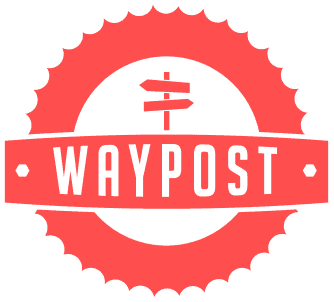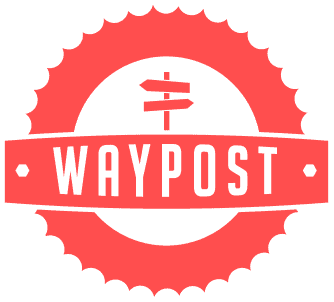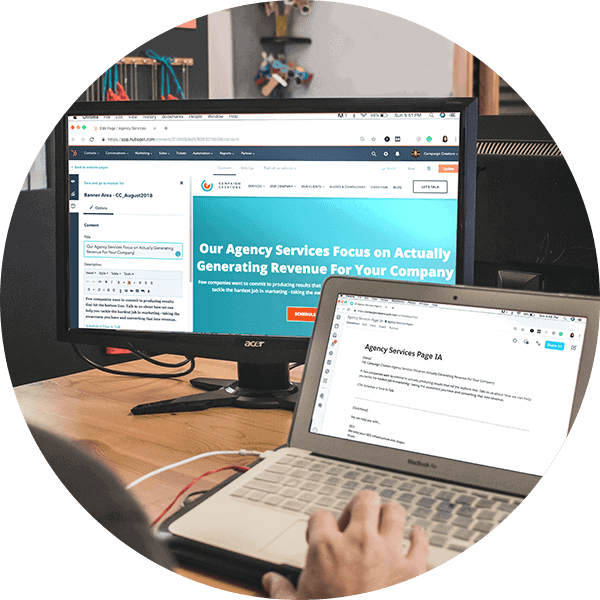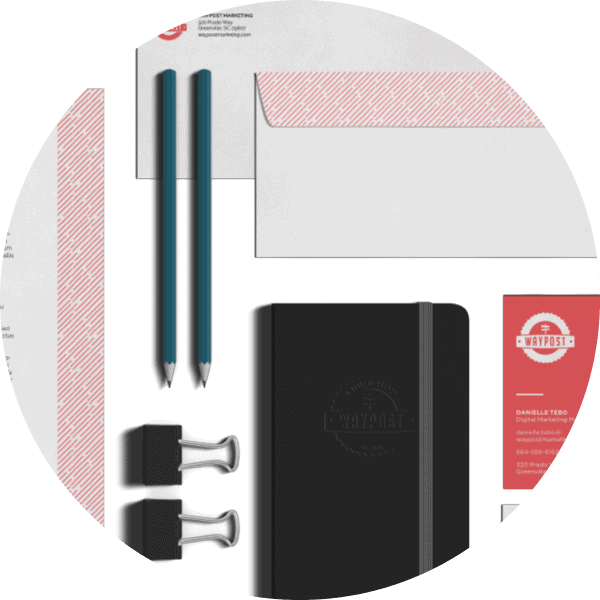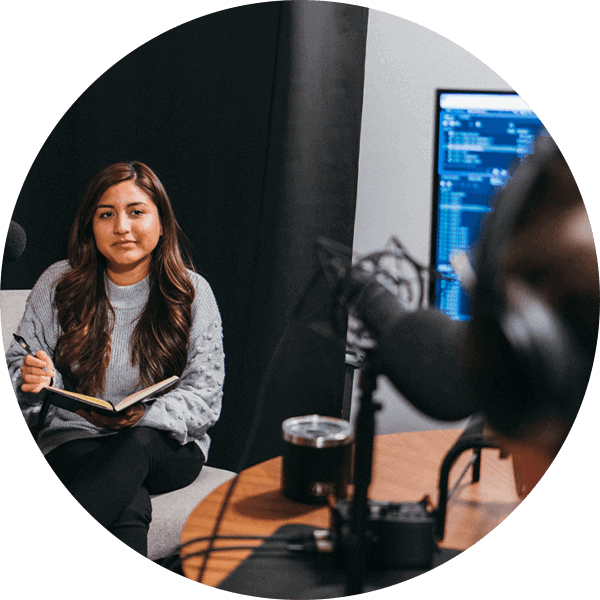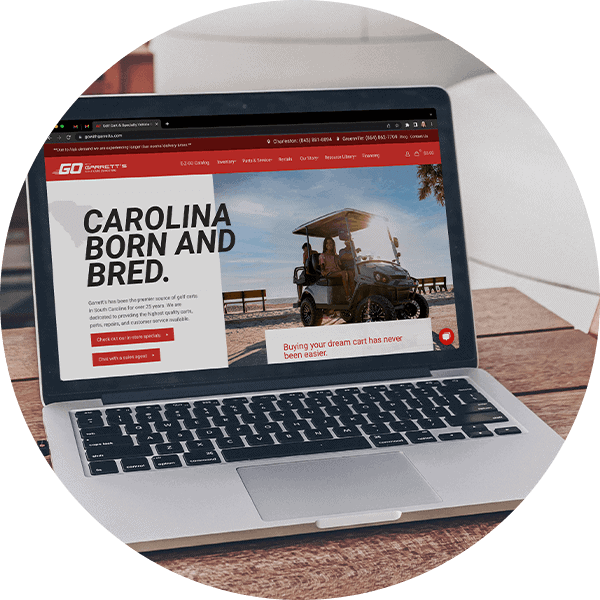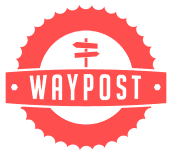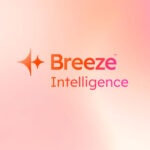
Breeze Intelligence vs. ZoomInfo and Apollo: Which B2B Database is Best for Your Sales and Marketing Teams?
October 16, 2024
Top 5 Reasons Business Owners Should Invest in HubSpot Service Hub
October 24, 2024Google Ads has long been the go-to digital advertising platform for many businesses. It’s the obvious choice, the search engine that has become an indispensable part of our daily lives. Every question, problem, concern you have …. just google it. Who wouldn’t want to advertise there?
The data speaks for itself — there simply is no equivalent alternative.
As the largest search engine in the world, Google holds a staggering 91.54% of the market share. Every minute, 5.9 million searches happen on Google, with 63% of those searches originating from mobile devices in the US.
The average Cost Per Click (CPC) across all industries is $2.69 for search and $0.63 for display advertising. The average conversion rate is 3.75% on the Search and 0.77% on the Display network. Some industries, however, have always struggled with incredibly high lead generation costs. For example, the legal industry faces the highest average CPC — $6.75, and a conversion rate of 6.98%.
What sets Google Ads apart as the premier advertising platform is its unparalleled ability to match user intent with advertiser supply. However, this efficiency comes at a cost, with many companies complaining about Google Ads being too expensive, so much so that their ad expenses rise by at least 10% annually. This trend forces many advertisers to expand their ad budgets, while others seek the next best alternative to avoid relying solely on one platform.
Maybe not “next best,” but here are the top Google Ads alternatives worth considering for your PPC strategy.
Paid Search
Microsoft Ads (Formerly Bing Ads)
When it comes to paid search, the “next similar thing” is Microsoft Ads. While it can’t compete with Google’s extensive reach, it holds a 3.43% market share of worldwide search. This still translates to millions, if not billions, of potential customers you can reach, an advertising resource worth tapping into.
Microsoft Ads is more cost-effective, with a lower Cost Per Click and less competition. The audience on Microsoft Ads tends to be older (45+), more likely to have a higher education, be married, and have children at home. The average CPC is $1.54, and the average conversion rate is 2.94%.
The average Cost per Click (CPC) is $1.54 and the average conversion rate is 2.94%.
Microsoft Ads is a valuable supplement to your PPC strategy, but it cannot fully replace the results you achieve with Google Ads.
The industries that do best on Microsoft Ads are:
- Career & Development — 6.81% conversion rate
- Financial Services & Insurance — 5.57% conversion rate
- Real Estate — 5.13% conversion rate
- B2C — 4.80% conversion rate
- Restaurants & Food — 4.42% conversion rate
YouTube Ads
YouTube combines elements of both social media and search, allowing users to discover new information and connect with others. As the second-largest search engine globally, it boasts over 2.5 billion logged-in users per month.
It is also one of the best Google Ads alternatives (and digital advertising platforms in general) since it offers a comparative reach and power behind its advertising capabilities.
While YouTube is a major platform for advertising, it often provides a disruptive ad experience, where your ad interrupts the user’s entertainment. This can lead to high skipping rates, so it’s important to invest in engaging visuals and high-quality content to effectively capture their attention.
Unlike Microsoft Ads, YouTube attracts a younger demographic, with the largest age group being 25-34 years old (21.3%), followed by 35-44 years old (17.5%) and 18-24 years old (15.5%). Advertisers generally pay between $0.10 and $0.30 per view, with an average Cost Per Thousand Impressions (CPM) around $20.
Paid Social
Meta Ads (Facebook & Instagram)
Facebook and Instagram, both owned by Meta, allow you to run ads on either platform individually or simultaneously.
Facebook offers extensive reach with over 3 billion active users, predominantly between the ages of 25-34 (30.8%). It, along with LinkedIn, is particularly effective for targeting audiences aged 45 and older, with 12.2% of Facebook’s users in the 45-54 age group. Additionally, Facebook tends to have a higher male user base across all age groups.
If you’re aiming to reach someone like Bob, a 49-year-old business owner looking for an attorney or a new car insurance package, Facebook is an ideal platform.
The average Cost Per Click on Facebook across all industries is $1.72, with industries like Finance & Insurance, and Home Improvement seeing higher CPCs of $3.77, $3.08, and $2.93, respectively.
Despite a lower average Click-through Rate (CTR) of 0.90%, Facebook boasts a strong average conversion rate of 9.21%. Fitness leads in conversions at 14.29%, followed by Education at 13.58% and Employment & Job Training at 11.73%.
For a younger audience, Instagram is the go-to, with over 1 billion monthly users and the largest age group being 18-24. Instagram’s user base is 56% female, with 43% having education beyond college.
The average CPC on Instagram ranges from $0.40 to $0.70.
Strong visuals are crucial on both Instagram and Facebook. Understanding your ideal customer, their interests, and habits (like we identify in a Discovery Project) will help you leverage Meta’s advanced targeting tools effectively. When it comes to paid social advertising, these platforms are excellent alternatives to Google Ads.
LinkedIn stands out as the top B2B digital advertising platform, offering the ability to target audiences based on company, industry, company size, job title, seniority, and more. This advanced targeting capability makes LinkedIn ads more expensive compared to other social media platforms, with an average CPC of $5.39 and an average Cost Per Thousand Impressions (CPM) of $6.27.
In terms of demographics, 47% of LinkedIn users are millennials, followed by Gen X at 29%.
LinkedIn is also less saturated with ads, allowing users to engage more deeply with content. Notably, 80% of B2B marketers are on LinkedIn.
Other Google Ads Alternatives
There are numerous social media platforms to consider, including X (formerly Twitter), Pinterest, TikTok, Snapchat, and Reddit. While each of these platforms offers unique advertising opportunities, they generally don’t match the reach and effectiveness of Google Ads or other major digital advertising platforms.
How Do I choose?
Most small to medium businesses can’t afford to advertise everywhere, and you really shouldn’t. Consider these criteria when making your choices:
- What are your marketing objectives? Different stages of the marketing funnel come with varying costs. Clearly defined SMART goals will help you narrow down the best digital advertising platforms and campaign types. Paid social and display networks are effective for the top and middle stages of the funnel, while paid search excels at driving results at the bottom.
- What audience are you trying to reach? Different audience groups behave, browse, and engage with online content in unique ways. Your ideal customer profile will guide you in selecting the right ad format, campaign type, visuals, and call-to-actions. The key advice is: don’t overthink — follow the data!
- What’s your budget? Some platforms are more expensive than others. If your budget is limited, focusing on Microsoft and Google Ads may be more cost-effective than investing in LinkedIn.
Each of these Google Ads alternatives can benefit your business if approached strategically, with reliable marketing data and realistic expectations. Remember, PPC success is enhanced by a strong website, a well-developed content strategy, precise sales timing, and diligent data collection and analysis.
